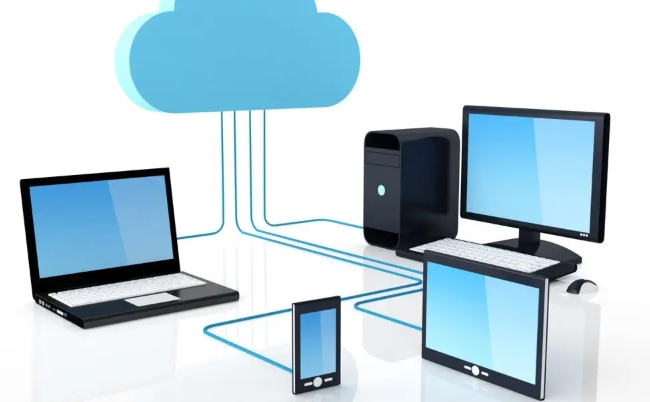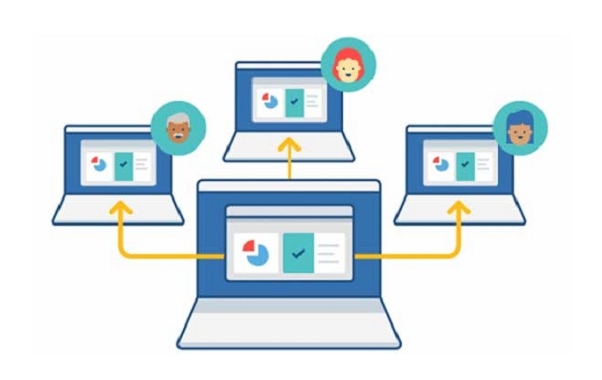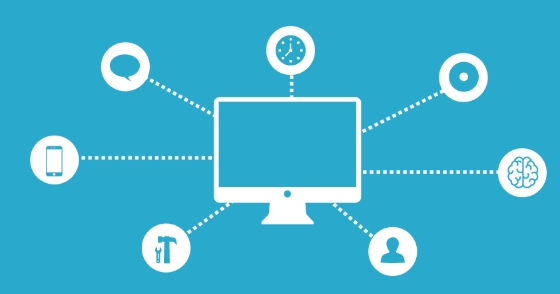The black screen of the remote desktop after logging in is usually caused by failed graphics or resource loading. The solutions are as follows: 1. Check whether the graphics card driver conflicts, try to enter safe mode to uninstall the current driver, use the basic driver or update to the latest version; 2. Adjust the remote desktop display settings, including setting the color to "high color (16-bit)", changing the resolution to the specific size, and canceling the synchronization of appearance preferences; 3. Optimizing the terminal service configuration, restarting the Remote Desktop Services service and cleaning up unnecessary sessions; 4. Troubleshooting system files or excessive resource usage, run sfc /scannow to scan the system files and check for abnormalities in explorer.exe or dwm.exe.

The black screen of the remote desktop after logging in is a common problem that many people encounter when using Windows Remote Desktop connection. This happens usually not a complete system crash, but a display exception caused by failure to load certain graphics or resources. Here are some solutions and troubleshooting directions you may need to try.

Check whether the graphics card driver conflicts
Incompatibility of graphics card drivers is one of the main reasons for the black screen of remote desktops, especially on servers or non-natively supported Windows versions.
You can try the following:

- In this unit enters safe mode (by restarting and pressing F8), uninstall the current graphics card driver
- Use Microsoft's own basic graphics card driver instead of third-party driver
- Update to the latest version of graphics card driver (especially NVIDIA or AMD graphics card)
If you cannot operate the target machine directly, you can consider fixing it through temporary access to other remote tools such as TeamViewer.
Adjust the display settings of the remote desktop
Sometimes, the settings of the remote desktop client itself will also cause the interface to fail to load normally. For example, the resolution is too high, the color digits are not set properly, etc.

You can try:
- Set the color of the remote desktop client to "High Color (16-bit)" instead of "High Color (32-bit)"
- Adjust the resolution of the local client, do not select "full screen", change to the specific size, such as 1024x768
- Remove the "Bring My Appearance Preferences to Remote Session" checkmark
These tweaks can be found in the "Display Options" of the Remote Desktop Connector.
Terminal service configuration optimization
Remote desktops rely on "terminal services" (now called Remote Desktop Services), and may also cause black screen if there is a problem with the related service.
You can try:
- Log in to the server and open the "Services" manager (services.msc)
- Find
Remote Desktop Servicesand right-click to restart the service - Check whether multiple users are logged in at the same time and force logout of other sessions (using the command
query sessionandreset session ID)
In addition, sometimes exhaustion of system resources (such as insufficient graphics memory) can also cause this problem, and proper restart of the host can often be alleviated.
System files are corrupt or resource occupancy is too high
Corrupted system critical files or a process full of resources may also lead to successful remote desktop connection but black screen.
Recommended to implement:
- Run
sfc /scannowlocally to scan system file integrity (administrator permission required) - Check the Task Manager to see if there is an explorer.exe or dwm.exe exception that takes up the CPU or crashes
- If explorer is not started, you can create a new task through Task Manager → File → and manually enter
explorer.exeto start the desktop environment
Basically, these common reasons and methods are there. Although it seems a bit too much, in most cases, starting with graphics card drivers and remote settings can solve the problem.
The above is the detailed content of Remote Desktop black screen after login. For more information, please follow other related articles on the PHP Chinese website!

Hot AI Tools

Undress AI Tool
Undress images for free

Undresser.AI Undress
AI-powered app for creating realistic nude photos

AI Clothes Remover
Online AI tool for removing clothes from photos.

Clothoff.io
AI clothes remover

Video Face Swap
Swap faces in any video effortlessly with our completely free AI face swap tool!

Hot Article

Hot Tools

Notepad++7.3.1
Easy-to-use and free code editor

SublimeText3 Chinese version
Chinese version, very easy to use

Zend Studio 13.0.1
Powerful PHP integrated development environment

Dreamweaver CS6
Visual web development tools

SublimeText3 Mac version
God-level code editing software (SublimeText3)
 How to create a custom brush in Photoshop
Jul 08, 2025 am 01:01 AM
How to create a custom brush in Photoshop
Jul 08, 2025 am 01:01 AM
The steps to create a custom brush in Photoshop are as follows: 1. Select a pattern with clear edges and suitable for brushes, such as hand-painted textures or photo parts, and adjust it to the appropriate size; 2. Use the "Magic Wand Tool" or "Quick Selection Tool" to remove the background to ensure that the pattern is in an independent selection; 3. Create a basic brush through "Edit > Define Brush Presets"; 4. Adjust the parameters such as "Shape Dynamic", "Scatter", "Text" and "Transfer" in the "Brush" panel to make the strokes more natural; 5. Finally, click "Save As Brush" to save as a .abr file for convenience of subsequent use and sharing.
 How to recover a corrupted AutoCAD file?
Jul 09, 2025 am 01:16 AM
How to recover a corrupted AutoCAD file?
Jul 09, 2025 am 01:16 AM
When AutoCAD file is corrupted, you can take the following steps to try to restore: 1. Check the automatic backup of the file, check whether there is a .bak or .sv$ file in the folder where the original .dwg file is located, and rename the .bak file to .dwg to open it; 2. Use the RECOVER command to try to repair the file, and if it fails, use the -OPEN command to open the file for partial recovery; 3. Use third-party tools such as DataNumenDWGRepair, RecoveryToolboxforDWG, etc. to deal with seriously damaged files. To prevent future damage, you should save regularly and use "Save As" to refresh the file structure, keep the software updated, avoid saving through network drives, enable automatic save and set up
 How to fix remote desktop connection issues
Jul 08, 2025 am 01:03 AM
How to fix remote desktop connection issues
Jul 08, 2025 am 01:03 AM
Remote Desktop connection problems can be checked through the following steps: 1. Check the network and firewall settings to ensure that the TCP3389 port is open; 2. Confirm that the remote desktop function is enabled and supported by non-home version systems; 3. Verify user permissions and belong to the "RemoteDesktopUsers" group or administrator; 4. Handle black screen or lag, adjust the display options or restart the remote computer. Check them one by one in order, and most problems can be solved.
 How to get Photoshop for free
Jul 12, 2025 am 12:34 AM
How to get Photoshop for free
Jul 12, 2025 am 12:34 AM
Adobe Photoshop does not have a permanent free version, but can be legally used in the following ways: 1. The official website provides a 7-day free trial, complete functions but automatic renewal is required; 2. Use a simplified version based on the browser (Beta), which supports basic editing functions; 3. Students or teachers can obtain a full-featured version through the school education plan; 4. Consider alternative software such as GIMP, Photopea, Krita or Canva Pixlr to meet daily needs. The above methods can meet the needs of different users and ensure legal and compliant use.
 AutoCAD 3D modeling tutorial
Jul 10, 2025 pm 12:20 PM
AutoCAD 3D modeling tutorial
Jul 10, 2025 pm 12:20 PM
Friends who are just beginning to get involved in AutoCAD3D modeling can start with the following steps: 1. Start practicing from basic geometry (such as cubes, cylinders, spheres), use BOX, CYLINDER, SPHERE and other commands to build simple models and combine them into complex structures; 2. Master Boolean operations (UNION merge, SUBTRACT cutting, INTERSECT intersection) to create solid models with holes or combined structures; 3. Pay attention to the settings of the view and coordinate system (UCS), switch the view angle to understand the structure, and ensure the correct operation direction by adjusting UCS; 4. After completing the modeling, it can be exported to STL, STEP or IGES format for easy printing or sharing, and use SECTIONPLANE
 How to warp an image in Photoshop
Jul 10, 2025 am 11:49 AM
How to warp an image in Photoshop
Jul 10, 2025 am 11:49 AM
The key to distorting pictures in Photoshop is to master three common methods. First, use the "Warp" function to freely adjust the image shape. Press Ctrl T to call out the transformation box and select "Deformation", and bending and stretching by dragging the points on the image; Second, use the "Liquefaction" function to perform local deformation, select the layer and enter the "Liquefaction" window, and use the "Forward Deformation Tool" to brush the target area, which is suitable for face slimming or adjusting details; Third, use "Twisting" or "Performance Deformation" to make the picture fit the spatial angle, and select the corresponding mode after calling out the transformation box and drag the corner matching screen. These methods are suitable for different scenarios and need to be flexibly applied according to actual needs.
 How to rotate canvas in Photoshop
Jul 12, 2025 am 12:41 AM
How to rotate canvas in Photoshop
Jul 12, 2025 am 12:41 AM
Rotating the canvas in Photoshop does not affect the image content, it can be achieved through the Navigator panel or shortcut keys. 1. Use the Navigator panel: After opening the panel, drag the mouse on the edge of the preview box to rotate the canvas in real time. 2. Use shortcut keys: Press the R key to activate the rotation view tool, drag the mouse to rotate; Shift R can temporarily switch back to the original tool. 3. Reset the angle: Click the "X" icon in the upper right corner or double-click the left mouse button to restore the default direction. Pay attention to distinguishing the "rotating image" function to avoid misoperation.







